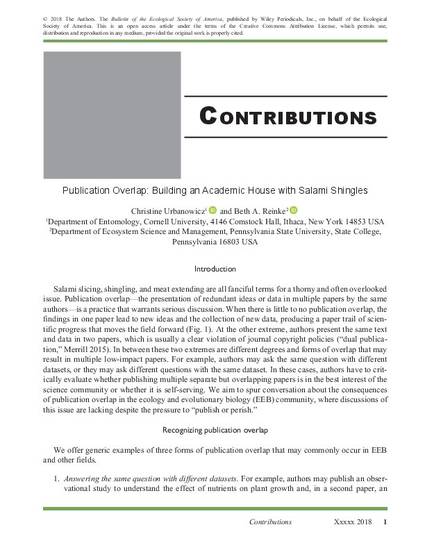
Article
Publication overlap: building an academic house with salami shingles
Bulletin of the Ecological Society of America
(2018)
Abstract
Salami slicing, shingling, and meat extending are all fanciful terms for a thorny and often overlooked issue. Publication overlap—the presentation of redundant ideas or data in multiple papers by the same authors—is a practice that warrants serious discussion. When there is little to no publication overlap, the findings in one paper lead to new ideas and the collection of new data, producing a paper trail of scien- tific progress that moves the field forward (Fig. 1). At the other extreme, authors present the same text and data in two papers, which is usually a clear violation of journal copyright policies (“dual publica- tion,” Merrill 2015). In between these two extremes are different degrees and forms of overlap that may result in multiple low-impact papers. For example, authors may ask the same question with different datasets, or they may ask different questions with the same dataset. In these cases, authors have to crit- ically evaluate whether publishing multiple separate but overlapping papers is in the best interest of the science community or whether it is self-serving. We aim to spur conversation about the consequences of publication overlap in the ecology and evolutionary biology (EEB) community, where discussions of this issue are lacking despite the pressure to “publish or perish.”
Disciplines
Publication Date
Winter January 1, 2018
Citation Information
Christine Urbanowicz and Beth Reinke. "Publication overlap: building an academic house with salami shingles" Bulletin of the Ecological Society of America (2018) Available at: http://works.bepress.com/beth-reinke/7/
